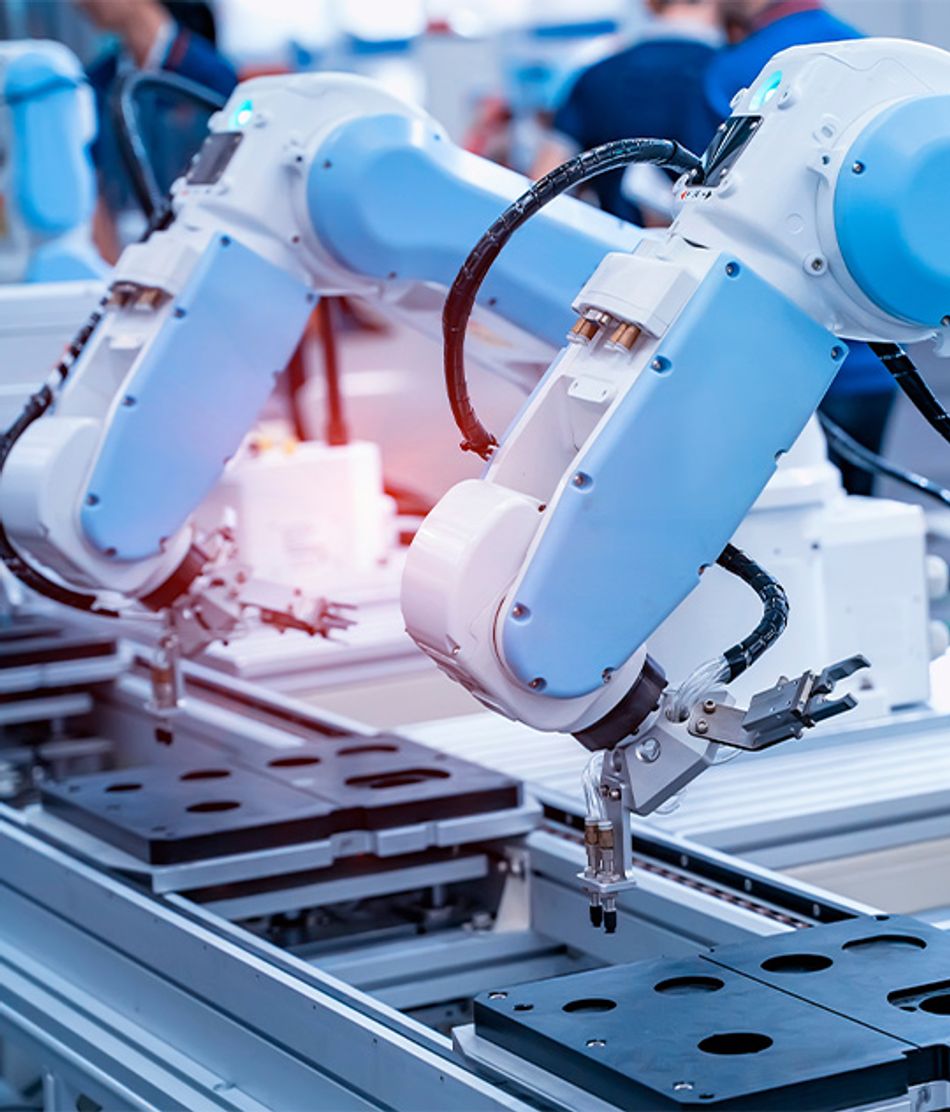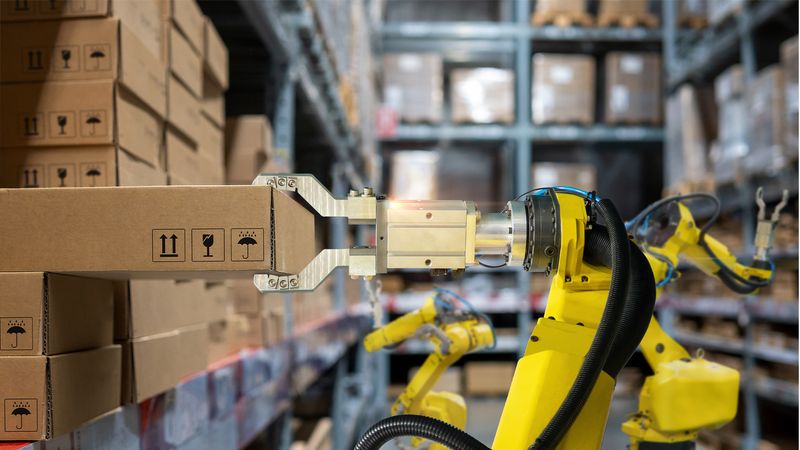What You Need To Know About Mobile Robots
Mobile robots are becoming increasingly common in manufacturing facilities, as they replace human beings in repetitive transfer tasks. Most of them can be found in warehouses, but they’re also finding a place in assembly and manufacturing plants. This is mainly due to continuing developments in sensor technology, and computer intelligence. Their safety and flexibility have also improved.
This article was first published on
www.rowse.co.ukIn terms of simplicity and logistics, people were always the obvious choice for moving something from A to B. Whether it was a push cart, trolley or forklift truck, a human operator was there to do the job. But increased automation and streamlining means that this isn’t usually the most efficient use of human time. The outcome is unsurprising – to develop an automated replacement for such tasks.
Mobile robots are becoming increasingly common in manufacturing facilities, as they replace human beings in repetitive transfer tasks. Most of them can be found in warehouses, but they’re also finding a place in assembly and manufacturing plants. This is mainly due to continuing developments in sensor technology, and computer intelligence. Their safety and flexibility have also improved.
Implementing the use of mobile robots in such environments has become much easier and is one of the benefits of bringing artificial intelligence into manufacturing.
What Is a Mobile Robot?
Mobile robots combine electrical and mechanical systems into a vehicular design, with an integral package of software capabilities. The basic designs tend to be simple – often just a platform on wheels or caterpillar tracks – but the software applications open up lots of innovative possibilities. Using their advanced sensory capabilities, mobile robots are able to perceive their own surroundings. This enables more effective and efficient navigation, and control capabilities for a whole fleet of mobile robots.
The basic applications of mobile robots in manufacturing start with moving raw materials, parts, tools, etc. For example, mobile platforms can be programmed to transport a production item from a storage area to workstations where further processes take place. After completion, mobile robots can transport items to a manual quality inspection area, before taking them on to a different storage location.

What Else Can Mobile Robots Do?
Production plants have been using automated guided vehicles (AGVs) since the 1950s. This is one of the easiest tasks to automate. Their designs and operation are typically very robust as they’ve evolved over decades. They frequently carry large and heavy objects, like vehicle chassis, engines and large components for aeroplanes or ships.
The more advanced versions are now called autonomous mobile robots, or AMRs. Many of their applications reflect the way that humans operate vehicular transport, on a road or railway. In factories, humans operate a tug vehicle to pick up and deliver materials on the factory or warehouse floor. They may transport a train of carts all over the facility, stopping off at various locations as required.
AGVs mimic a similar format of travel to a tram or train route. They’re constrained to follow defined pathways around the facility, always proceeding in the same direction. Like a tram, they travel a fixed route, on a predetermined schedule with predetermined stops for picking up or dropping off. They use simple navigation technologies, like magnetic tape tracking and magnets embedded in the floor.
More advanced technologies have introduced laser targets or fiducial markers, which are objects placed in the AGV’s field of view. The AGV’s optical sensors use these as a measure or point of reference to navigate safely around the building. Most AGVs can sense an obstacle blocking their path and not drive into it. Instead, they’ll come to an emergency stop and set off an alarm. What they’re not capable of doing is to navigate around an obstacle. Production or warehouse facilities therefore set aside designated AGV paths, which people and all other aisle traffic are expected to keep out of.
How AMR Beats AGV
As well as embedded tracking, an AMR has various transit options, similar to other classic transportation patterns. A bus, for example, doesn’t follow physical tracks and may have either a circular or a linear route. People may get on at one stop and off at another, which is too advanced for a basic AGV. Even more complex, a taxi service may cover a certain area, but not use any predetermined route or stops.
Modern mobile robots have been designed to incorporate this kind of agility. To do this, they need to be programmed with an accurate map of the warehouse or production facility. They must have several types of sensors installed, and the additional intelligence required to navigate the environment autonomously. Equipped with this information and capabilities, AMRs are able to determine the best path from any given point to another.
AGVs are no longer thought of as mobile robots, because they lack advanced sensor technology, navigation capabilities and control intelligence. Similarly, mobile robots are not thought of as AGVs for the opposite reasons. They’re capable of roaming freely through the production facility and making independent navigation choices. This means they can assess the environment conditions and use onboard control systems to spot and avoid obstacles.
Should I Switch To AMRs?
If you’re thinking about implementing mobile robots in your manufacturing environment, you need to consider how best to integrate them with other machinery. You’ll have to consider what human manual processes and functions can be automated, and how they’ll need to be adapted for machinery or robots.
Make a list that specifies these processes and tasks, and use it to evaluate what kind of mobile solution you need:
- What machinery would a mobile robot have to interact with?
- What model of mobile robot is best for your application’s size and payload?
- How can the mobile robot be safely loaded, secured and unloaded?
- What degree of driving precision will the mobile robot need?
- Will it be able to move safely throughout the facility?
- Will it have to take other vehicles into account?
- How will you ensure that humans working in the area are always safe?
AMR systems usually cost more than AGVs of a similar size and payload, but their control system and functional design are far more complex. Robots can’t read or refer to paper instructions, so you’ll have to evaluate your data flow and determine what’s the best software solution for your requirements.
Figure out how the robots are going to get their orders, whether it’s via a programmable logic controller (PLC) or a warehouse management system. You’ll need to work out how to design a human-machine interface and the best means of communicationbetween different systems. You should also decide whether and how you want to handle things like right-of-way rules, prioritising orders and battery charging.
Both AGVs and AMRs operate on battery power, but AMRs use more expensive, modern battery chemistry. Continuously-operated systems are usually provided with automatic battery swap stations. One set of batteries can be put on charge there while a ready-charged set keeps the vehicle running. Human operators may also do this if the system isn’t automated, or sometimes even take the vehicle offline to recharge.
What Other Advances Have Been Made In Mobile Robotics?
Technological advances have led to the development of the IMR, or industrial mobile robot. An IMR takes the basic AGV or AMR platform and combines it with a robotic arm. The AMR’s machine vision and control capabilities are integrated for registration and guidance. The mobile platform or conveyor navigates the robotic arm to and from operational waypoints, where it can put down or pick up items.
This area of robotics is sometimes called mobile manipulation. It expands the range of potential applications from basic transportation to processes such as tool changing, machine tending, unloading 3D printers, parts processing and inspection. IMRs have a wide range of uses, especially in warehousing and logistics. Workflow programs have been introduced that enable an IMR to travel through a warehouse to fill customer orders, picking items direct from inventory shelving.
For example, one model of IMR has a robot arm equipped with a vacuum gripper mounted onboard. It’s able to locate and unload packages directly from a vehicle stationed at a loading dock. It actually digs its way into the delivery vehicle, picking up each carton and dropping it onto a gravity conveyor. This conveyor then transports the packages out of the trailer, while the IMR carries on picking until the vehicle is empty.
Another concept utilising two AMRs in tandem is called robot-to-goods workflow or mobile palletising. In this operation, one AMR travels to different inventory locations. It can pick an item from stock shelves and place it on an empty pallet carried by a second AMR. The two robots can then move to second and subsequent locations to create a unit load pallet. This operation uses the capabilities of dual control and thus becomes an IMR.
Distribution centres could also deploy IMRs for cross-docking operations, where they’d break down unit loads and reassemble them to send out elsewhere.
Invest for the Future
For some business owners, the employment situation in manufacturing might demand a greater level of automation to keep afloat. IMRs can deliver improvements in many areas, including flexibility and quality, safety and ergonomics, process optimisation and traceability.
They’re still finding their robotic feet as new potential applications arise, so the potential is only going to get greater. If you decide to invest in IMRs, you’ll not only achieve short-term gains but also increase throughput and reduce your payroll.
